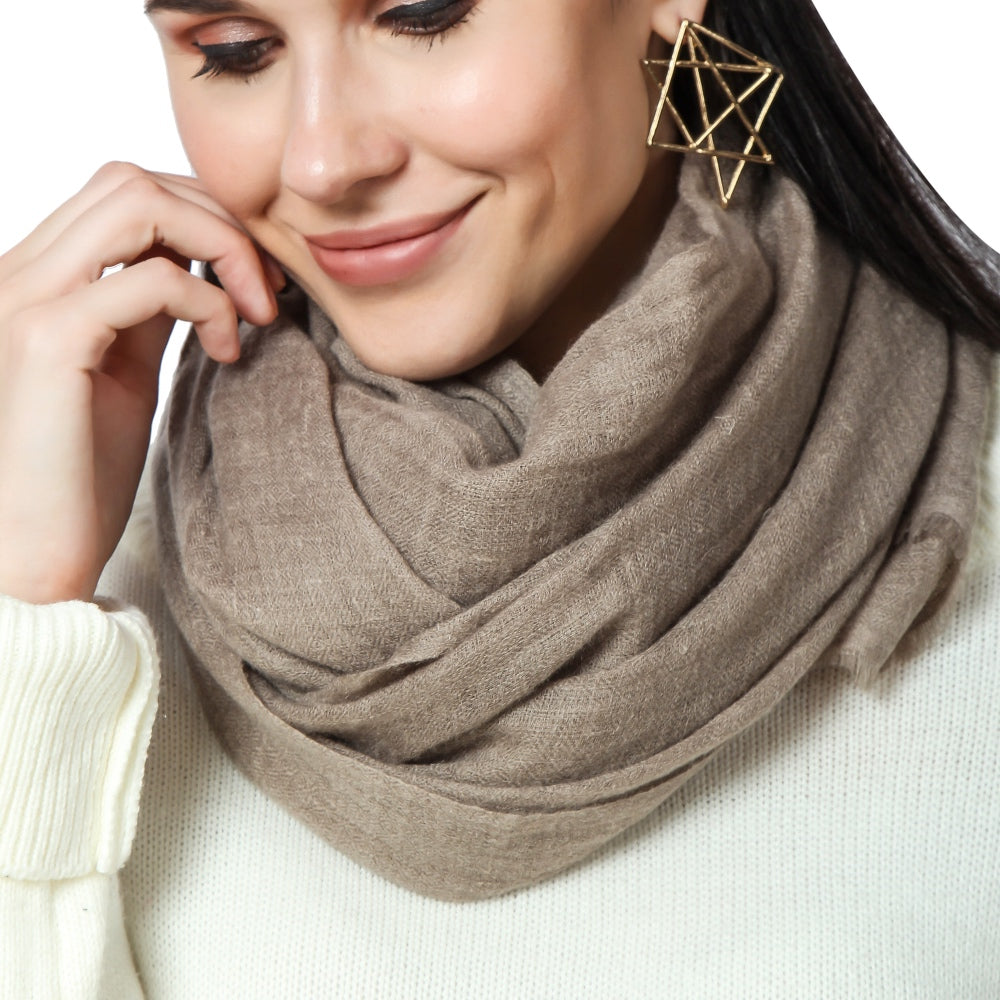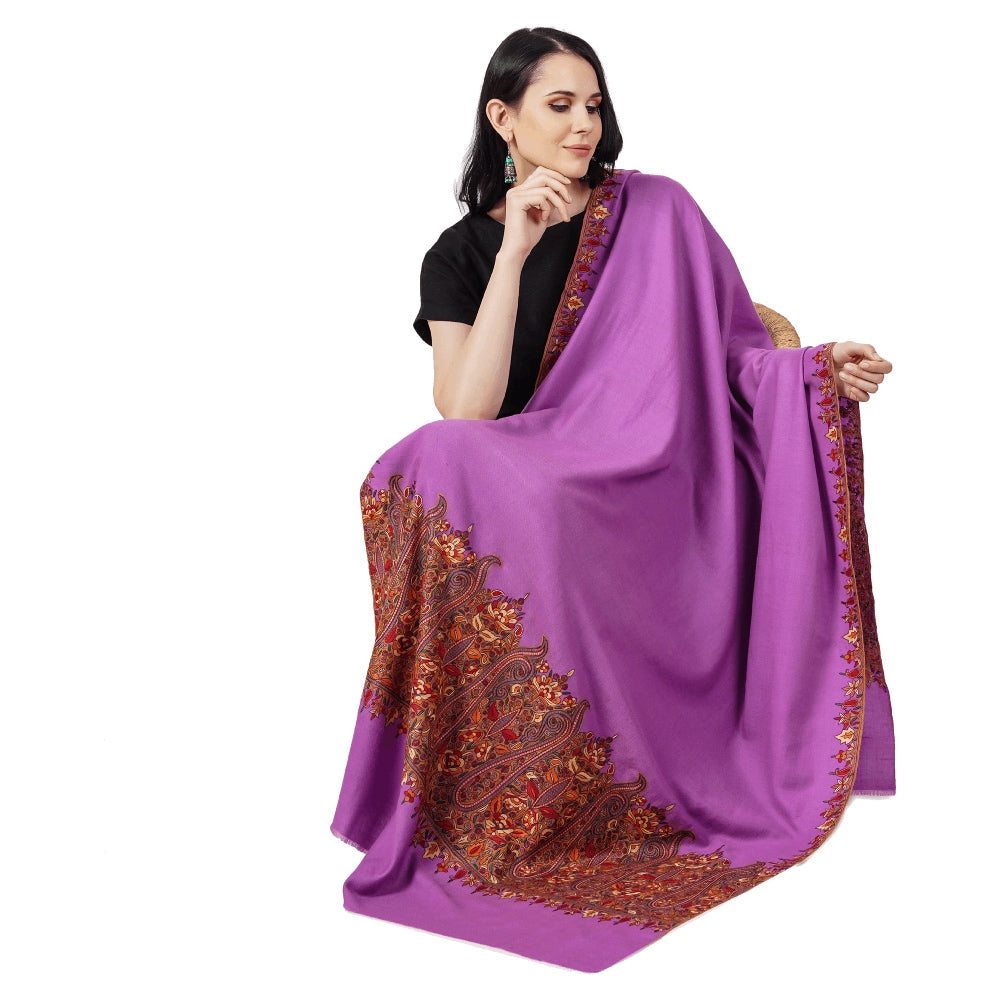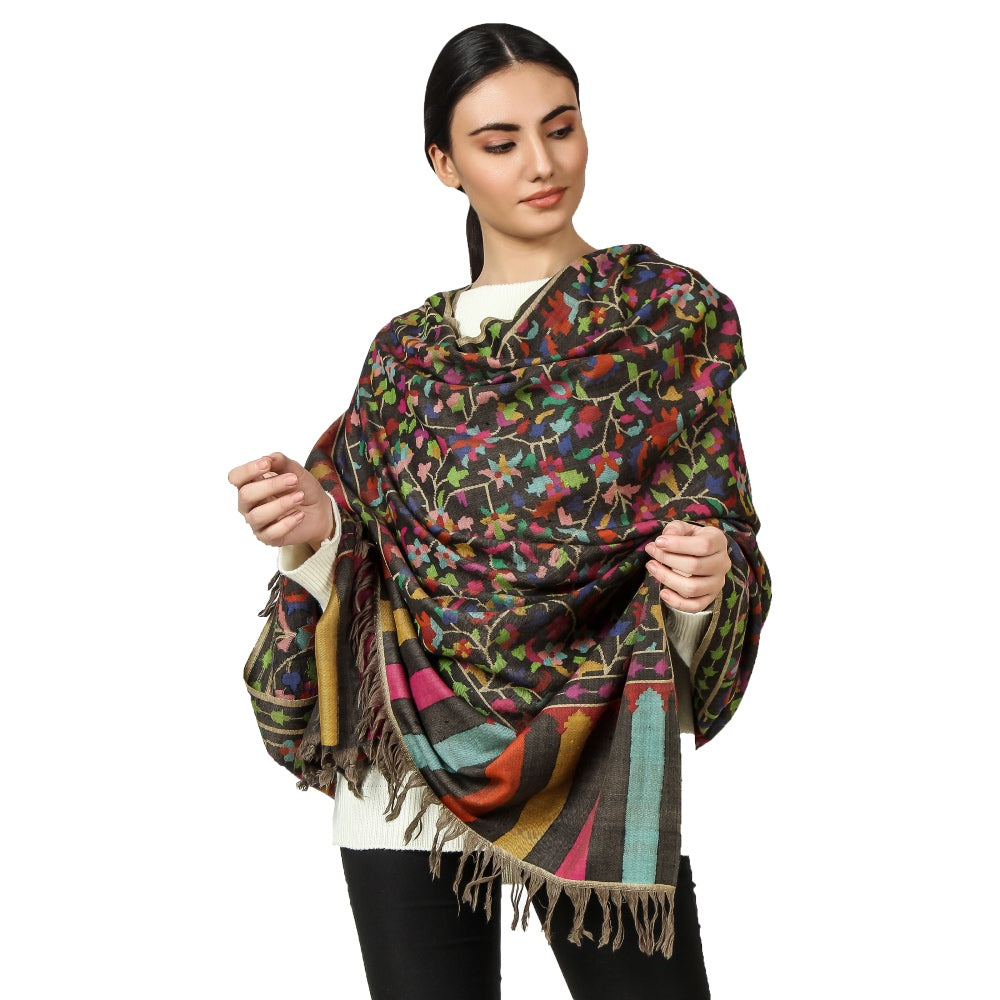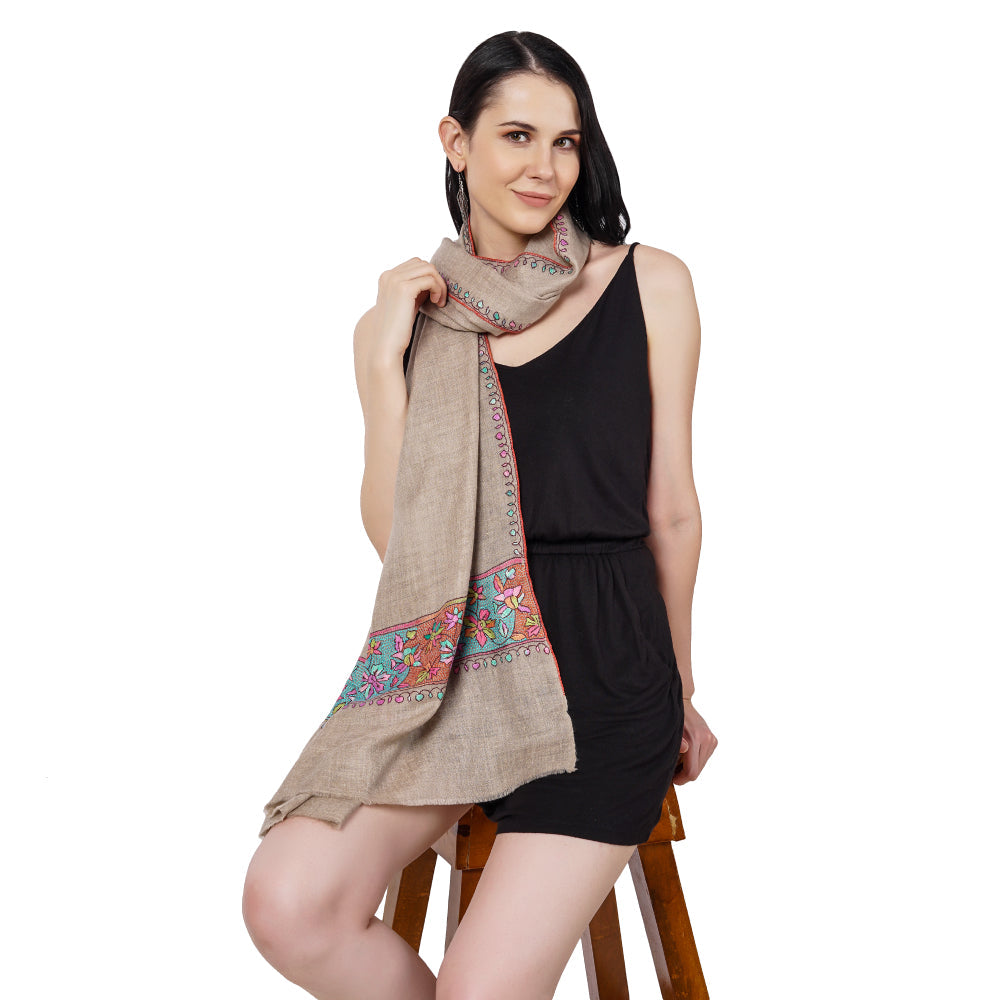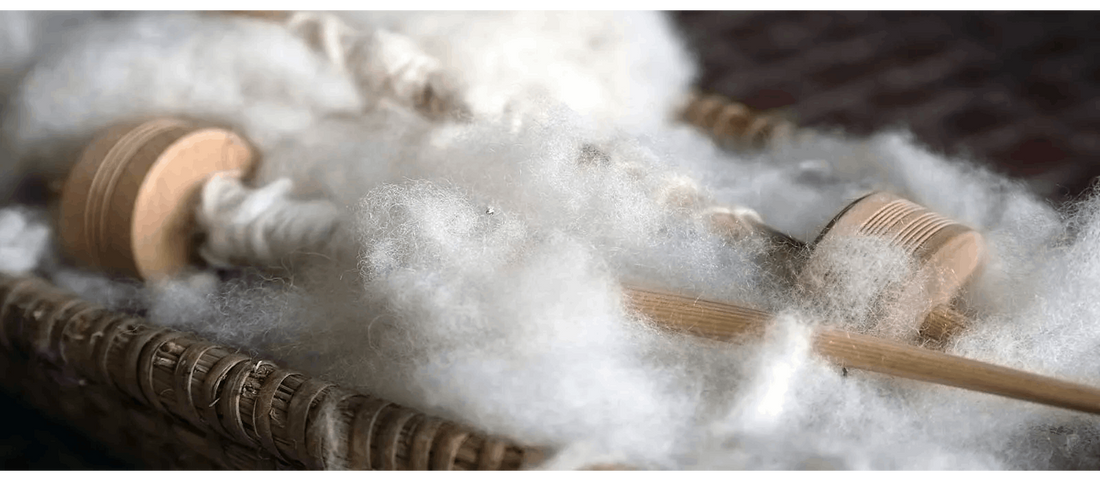
The Ultimate Guide to Pashmina: Is it Really From a Kashmiri Goat?
Share
Pashmina is a luxury textile made from the wool of the Changthangi goat, which is also known as the Pashmina goat (A sub breed of Capra Hircus). The fibers of Pashmina are extremely fine and soft, which makes it one of the most valuable and sought-after materials in the fashion industry. Pashmina is also known for its lightweight, yet warm qualities, making it an ideal choice for scarves, shawls, and other clothing items.
Understanding the origin of Pashmina is essential for anyone who appreciates this luxurious material. Knowing where Pashmina comes from, how it is produced, and the history of its use can help you make informed decisions when purchasing Pashmina products. It can also help you appreciate the skill and craftsmanship involved in producing this material and the importance of supporting ethical and sustainable Pashmina production.
Pashmina has been produced for centuries in the Kashmir region of India, where the harsh winters necessitated warm clothing. The wool from the Pashmina goat was highly prized for its warmth and softness, and the weaving of Pashmina shawls and scarves became an important industry in the region. However, the popularity of Pashmina has also led to concerns over animal welfare and the exploitation of workers in the Pashmina industry.
Also read: Which is the most expensive wool?
What is Pashmina?

Pashmina is a fine wool fabric made from the undercoat of the Changthangi Goat a sub breed of Capra hircus goat, which is native to the Himalayan region of Ladakh. The name "Pashmina" comes from the Persian word "pashm," which means "soft underbelly." Pashmina is known for its fine texture, softness, and warmth, making it a highly prized material in the fashion industry. Pashmina is typically used to make scarves, shawls, and other clothing items.
Also read: What is the point of Pashmina
Characteristics of Pashmina
Pashmina is characterized by its fine, soft texture and lightweight feel. The fibers of Pashmina are very thin and delicate, measuring only about 12-15 microns in diameter. This makes Pashmina softer and more luxurious than other types of wool, such as cashmere. Pashmina is also known for its insulating properties, which make it warm and cozy, despite its lightweight feel. Pashmina is hypoallergenic and is less likely to cause irritation or itching than other types of wool.
Types of Pashmina
There are several different types of Pashmina, each with its unique characteristics and properties. The most common types of Pashmina are:
-
Pure Pashmina: This is the highest quality Pashmina, made from the finest and softest fibers of the Changthangi goat. Pure Pashmina is lightweight and has excellent insulating properties.
-
Pashmina/Silk blend: This type of Pashmina is made by blending Pashmina wool with silk fibers. The silk adds a lustrous sheen to the fabric and makes it stronger and more durable.
-
Pashmina/Cashmere blend: This blend combines Pashmina with cashmere wool, which is also highly prized for its softness and warmth. The resulting fabric is extremely soft and luxurious.
-
Pashmina/Wool blend: This blend combines Pashmina with other types of wool, such as merino or lambswool. The resulting fabric is less expensive than pure Pashmina but still has many of the same qualities, such as softness and warmth.
Also read: How to know if a Pashmina is pure?
The Origin of Pashmina
Pashmina in Kashmir
The Kashmir region of India is widely considered to be the birthplace of Pashmina. Pashmina goats have been raised in the region for centuries, and their wool has been used to make clothing and textiles since ancient times. The harsh winters in the region made warm clothing a necessity, and the fine wool of the Pashmina goat provided an ideal material for weaving shawls and other garments. Pashmina production in Kashmir reached its peak during the Mughal era, and the region became famous for its exquisite Pashmina shawls, which were highly sought after by royalty and nobility.
Pashmina's history in India

Pashmina production gradually spread to other parts of India over the centuries. The wool from the Pashmina goat was highly prized for its softness and warmth, and it became an important industry in regions such as Himachal Pradesh, Uttarakhand, and Ladakh. The production of Pashmina textiles in India reached its zenith during the British colonial period, when Indian Pashmina shawls became a fashionable accessory among the British upper class. Pashmina production in India is now regulated by the Indian government to ensure that Pashmina products are authentic and of high quality.
Also read: History of Scarves
Understanding the Pashmina Industry
Pashmina trade around the world
The Pashmina industry is a global one, with Pashmina products being exported and sold around the world. Pashmina shawls, scarves, and other textiles are highly sought after for their softness, warmth, and luxurious feel. The largest producers of Pashmina products are India, Nepal, and China. Pashmina products are also imported by many countries, including the United States, United Kingdom, and Japan.
Challenges in the Pashmina industry
The Pashmina industry faces a number of challenges, including the prevalence of fake Pashmina products and the difficulty in regulating the quality of Pashmina textiles. Many manufacturers use the term "Pashmina" to describe products that are not actually made from Pashmina wool, and this has led to confusion among consumers. Another challenge facing the industry is the rise of cheap, synthetic materials that mimic the look and feel of Pashmina, but are far less expensive to produce.
Ethical concerns and sustainability
The Pashmina industry has also been subject to criticism in recent years over ethical concerns and sustainability. The production of Pashmina textiles involves the harvesting of the wool from the Changthangi goat, and concerns have been raised over the welfare of these animals. Some Pashmina producers have been accused of engaging in unethical practices, such as over-harvesting or mistreating the goats. In addition, the demand for Pashmina products has put pressure on the environment, as the grazing of Pashmina goats can lead to overgrazing and environmental degradation. To address these concerns, some Pashmina producers have begun to focus on sustainable and ethical production methods, such as organic farming and fair trade practices.
Is Pashmina Really from a Kashmiri Goat?

To put it straight, the answer is yes, Pashmina is native to the Valley of Kashmir and it is Kashmir where Pashmina originated from. The word "Pashmina" is believed to have originated from the Persian word "Pashm," which means wool. The term "Pashmina" is now commonly used to describe a type of fine, lightweight wool that is used in the production of luxury textiles such as shawls, scarves, and blankets.
The type of goat that produces Pashmina
Pashmina is produced by a specific breed of goat called Changthangi which are native to Ladakh region of Jammu & Kashmir, India. Rather, it is the fine inner coat of hair that grows on the underbelly of Changthangi Goat breeds of goats that are native to the high-altitude regions of Ladakh region of Jammu & Kashmir, India. The Changthangi goat, which is commonly found in the Kashmir region of India, is known for producing high-quality Pashmina wool.
Other animals that produce a similar fiber

While Pashmina is often associated with the Changthangi goat, there are other animals that produce a similar type of fine, lightweight wool. For example, the Cashmere goat, which is native to the Himalayan region of Nepal, China, and Mongolia, produces a wool that is very similar to Pashmina. Other animals that produce a similar fiber include the yak, the muskox, and the vicuña. However, Pashmina remains one of the most highly sought-after luxury textiles due to its softness, warmth, and durability.
Also read: Exploring the warmth of Pashmina and different types of wools
How is Pashmina Made?
The process of collecting Pashmina

The process of collecting Pashmina is a delicate one, as the wool is obtained from the undercoat of the goat, which is only produced in small quantities each year. The collection of Pashmina typically occurs during the spring, when the goats naturally shed their undercoat. The wool is collected by combing or shearing the goat's coat, and only the softest, finest fibers are used in the production of Pashmina textiles.
Spinning and weaving Pashmina
 Once the Pashmina fibers have been collected, they are cleaned and sorted by hand to remove any impurities or coarse fibers. The fibers are then spun into yarn, which is used to create the luxurious Pashmina textiles. Traditionally, Pashmina yarn is spun by hand using a drop spindle, which allows for greater control over the quality and texture of the yarn. Once the yarn has been spun, it is woven into a variety of different textiles, including shawls, scarves, and blankets.
Once the Pashmina fibers have been collected, they are cleaned and sorted by hand to remove any impurities or coarse fibers. The fibers are then spun into yarn, which is used to create the luxurious Pashmina textiles. Traditionally, Pashmina yarn is spun by hand using a drop spindle, which allows for greater control over the quality and texture of the yarn. Once the yarn has been spun, it is woven into a variety of different textiles, including shawls, scarves, and blankets.
Dyeing and finishing Pashmina

After the Pashmina textiles have been woven, they are typically dyed and finished to enhance their color and texture. The dyeing process is often done by hand using natural dyes, such as indigo, madder root, or saffron. Once the textiles have been dyed, they are carefully washed and dried to remove any excess dye or impurities. Finally, the textiles are finished by hand, with the edges carefully trimmed and the final product inspected for quality and craftsmanship. The result is a luxurious, high-quality textile that is sought after by fashion connoisseurs around the world.
Also read: How to know if a Pashmina is Pure?
The Difference Between Pashmina and Cashmere
Definition of Cashmere
Cashmere is a luxurious fiber that is obtained from the soft undercoat of the Cashmere goat. The fiber is known for its exceptional softness, warmth, and lightweight feel, which makes it a popular material for high-end clothing and accessories.
Also read: Is Pashmina and Cashmere the same?
Characteristics of Cashmere
Cashmere fibers are finer and softer than most other types of wool, which gives them a luxurious feel and appearance. Cashmere fibers are also incredibly warm and lightweight, making them ideal for use in cold weather clothing and accessories. The fibers have a natural crimp that helps to trap warm air, providing excellent insulation.
Differences between Cashmere and Pashmina
While Pashmina and Cashmere are often used interchangeably, they are not the same thing. Pashmina is a specific type of Cashmere that is obtained from the undercoat of a particular breed of goat found in the Himalayan region of Kashmir. Pashmina fibers are typically finer and softer than other types of Cashmere fibers, which makes them even more luxurious and sought after. Additionally, Pashmina fibers are typically longer than other Cashmere fibers, which makes them more durable and less prone to pilling.
While Cashmere is a luxurious fiber that is obtained from the undercoat of the Cashmere goat, Pashmina is a specific type of Cashmere that is obtained from a particular breed of goat found in the Himalayan region. While they share many similarities, Pashmina fibers are typically finer, softer, and longer than other Cashmere fibers, which makes them even more luxurious and sought after.
Also read: Where does pashmina come from?
How to Care for Pashmina

Pashmina is a delicate material, so it's important to take special care when cleaning and washing it. It's best to avoid machine washing and instead opt for hand washing in cool water with a gentle detergent. To dry, gently squeeze out any excess water and lay the Pashmina flat on a towel to air dry. Avoid wringing or twisting the fibers, as this can damage the delicate fibers.
Storing Pashmina

When storing Pashmina, it's important to keep it in a dry, cool place, away from direct sunlight. To avoid moth damage, it's also important to store it in an airtight container or bag with mothballs or cedar chips. Folding Pashmina can cause creases, so it's best to hang it or roll it up loosely to prevent any damage.
Repairing Pashmina
If your Pashmina becomes damaged, it's best to take it to a professional for repair. Small tears or holes can often be repaired using a needle and thread, but it's important to take care not to damage the fibers further. In some cases, a professional may be able to reweave damaged sections of the Pashmina to restore its original appearance.
In summary, caring for Pashmina requires delicate handling and careful storage to ensure that it remains in excellent condition. By taking proper care of your Pashmina, you can enjoy its luxurious feel and appearance for years to come.
Also read: How to clean Pashmina Scarf
How to Spot Fake Pashmina
Due to the high demand for Pashmina, there are unfortunately many fake or imitation products on the market. Common methods used to create fake Pashmina include blending lower-quality fibers with a small amount of Pashmina, or using chemical treatments to create a Pashmina-like texture.
Authentic Pashmina is made from the fine undercoat of the Kashmir goat, and has a unique texture and feel. To identify authentic Pashmina, look for the "Pashmina" label or a "100% Pashmina" label, which indicates that the product is made solely from Pashmina fibers. Authentic Pashmina should feel soft and lightweight, with a natural sheen and a slightly fuzzy texture.
When buying Pashmina, it's important to do your research and buy from a reputable source. Look for trusted retailers or brands that specialize in Pashmina products. Be wary of products that are labeled as "Pashmina blend" or "Pashmina-like," as these may contain only a small percentage of authentic Pashmina. When purchasing Pashmina online, be sure to read product descriptions and reviews carefully to ensure that you're getting an authentic product.
In summary, identifying and purchasing authentic Pashmina requires careful attention to labels, textures, and sources. By taking the time to research and buy from trusted sources, you can ensure that you're getting the real deal and supporting the Pashmina industry.
Also read: How to know if pashmina is pure
Frequently Asked Questions
A. What is the cost of Pashmina?
The cost of Pashmina can vary greatly depending on the quality of the fibers and the intricacy of the design. Generally, authentic Pashmina products are more expensive due to the rarity of the fiber and the labor-intensive process of production. The price of Pashmina scarves or shawls can range from around $100 to several thousand dollars.
B. How do I know if my Pashmina is authentic?
To ensure that your Pashmina is authentic, look for the "Pashmina" label or a "100% Pashmina" label. Authentic Pashmina should feel soft and lightweight, with a natural sheen and a slightly fuzzy texture. Be wary of products that are labeled as "Pashmina blend" or "Pashmina-like," as these may contain only a small percentage of authentic Pashmina.
C. Can Pashmina be worn year-round?
Yes, Pashmina can be worn year-round. Due to its lightweight and breathable qualities, it's an excellent choice for both warm and cool weather. In the winter, Pashmina provides warmth and insulation, while in the summer it can be worn as a light and airy accessory.
D. Can Pashmina be worn by both men and women?
Yes, Pashmina is a versatile accessory that can be worn by both men and women. It can be styled in a variety of ways, from traditional shawls and scarves to more modern wraps and stoles.
E. How do I style Pashmina?
Pashmina can be styled in many ways, depending on the occasion and personal preference. It can be draped over the shoulders as a shawl, wrapped around the neck as a scarf, or worn as a wrap or stole. Pashmina can also be styled in more unique ways, such as a turban or head wrap. Experiment with different styles and find what works best for you.
Conclusion
Pashmina is a luxurious and rare fiber that comes from the undercoat of the Kashmir goat. It has been produced for centuries in the Himalayan regions of Kashmir, India, Nepal, and Tibet, and is known for its softness, warmth, and durability.
As the demand for Pashmina has grown, so has the prevalence of fake or imitation products. Understanding how to identify authentic Pashmina is important for supporting the industry and ensuring that you're getting a quality product.
Pashmina has a long and rich history in fashion and culture, and its popularity shows no signs of waning. From traditional shawls and scarves to modern wraps and stoles, Pashmina is a versatile accessory that can add style and sophistication to any outfit. By supporting the authentic Pashmina industry, we can help preserve this luxurious and unique fiber for future generations.




